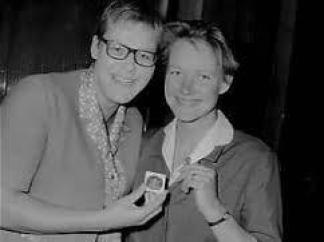
Dorothy Odam-Tyler of London competed in four Olympics, which is an amazing fact. But she did so over a 20 year-period in a land devastated by war. A world record high jumper, Tyler-Odam won the silver medal in the 1936 and 1948 Olympics, the only athlete to have won medals before and after the Second World War.
World War II took place from 1939 to 1945, resulting in the deaths of over 60 million people. Quite ironically, the host cities selected for the XI Olympiad in 1936, the XII Olympiad in 1940, and the XIII Olympiad in 1944 were respectively Berlin, Tokyo and London – the capitols of the three of the most prominent players in the Second World War.
As it turned out, Olympics of 1940 and 1944 were cancelled due to war. In other words, the Olympic spirit, or rather the Olympic legend of suspending war in order to conduct an Olympiad was not able to overcome the nationalism and militarism of the mid-20th century.
In 1936, war was not imminent. Adolf Hitler had come to power in Germany, but had not yet made explicit his need for “elbow room”. Thus the 1936 Games in Berlin were his opportunity to show the world that the German way was the way of the future.
Dorothy Odam, as she was known in 1936, was still only 16 years old when she appeared in Berlin. According to Mike Fleet in his wonderful biography of the English high jumper entitled Thanks and No Thanks Mr Hitler, Odam-Tyler had an eye-opening experience. “The politically uniformed teenager had a further rude awakening, as hundreds of Hitler Youth members marched about proudly swinging their swastika armbands, many with shovels and brooms at the slope of their shoulders.”
Despite the militaristic atmosphere and the grandeur of the opening ceremonies, the teenager was able to keep her emotions intact, and battle to, essentially, a tie in the high jump. Utilizing a scissor-jump approach, Odam-Tyler was one of three of the remaining athletes to jump 1.6 meters on her first attempt. Only two others were able to clear that height, but not without failed attempts.
Unfortunately, the rules were not in Odam-Tyler’s favor, according to Fleet. In today’s world, Odam-Tyler would have been considered the winner for making the top height with the least number of missed attempts. But in 1936, they re-set the bar higher. In the next round, Ibolya Csak of Hungary was the only one to clear 1.62 meters. Odam-Tyler cleared 1.6 meters again, taking silver, and becoming the first British woman to win an Olympic medal.
During the war years, Odam-Tyler worked for the Royal Air Force in the war effort, still finding time to train. She was now married to Dick Tyler, but they were soon separated as he joined a tank regiment that served first in North Africa, and then in Burma. And fortunately, they both survived the war.
Dorothy Odam-Tyler was now 28, and the Olympic Games were scheduled for the summer of 1948 in London. Her motivation was to win gold and wipe out the memory of her loss in Berlin 12 years before. And despite the time that had been sacrificed to war instead of training and competition, the bar continued to be raised, literally, in what was a thrilling competition.
As the field thinned, only three remained at 1.62 meters, including American Alice Coachman and French women Micheline Ostermeyer. At 1.64, Ostermeyer failed to make the cut. Odam-Tyler and Coachman continued their duel. First they both cleared 1.66 meters, setting an Olympic record. Then they both cleared 1.68. But at 1.70 meters, both failed in their three attempts. Due to the tie-breaking rules, Coachman was declared the winner, and became the first black woman to win an Olympic gold medal.
As for Odam-Tyler, she won her two silver medals in two Olympiads 12 years apart, bookending one of the most violent and largest wars in the history of mankind. One could













You must be logged in to post a comment.